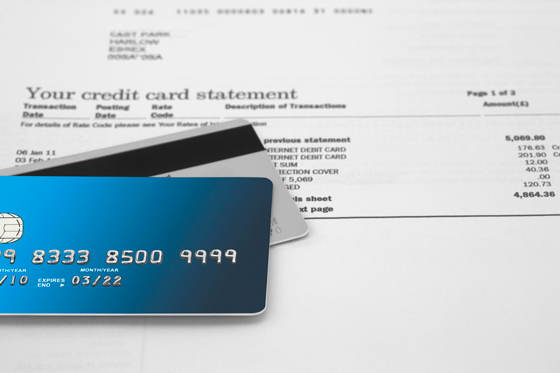Credit card interest can be confusing to understand when so much of your money is being thrown around on a regular basis – not to mention some people have multiple cards with multiple rates.
Maybe thinking about your credit card interest rate and how your bill gets tallied up at the end of each month seems far too complicated to try and understand. Or you may think you know all there is to know about credit card interest. Either way, you may be surprised.
The trick, as it is with many financial products, is to avoid getting hit by nasty interest charges … but first you must understand them. So, here’s what you need to know about credit card interest rates.
When is interest charged on a credit card?

Credit card interest on purchases is usually charged when are you are not receiving the benefit of the interest-free days on your card. This could be because:
- You have not paid the full closing balance on your last statement by the due date. To receive the full benefit of the interest-free days on your card (e.g. 44 or 55 days) you must fully pay the closing balance on your statement each month.
- You have an outstanding balance on your credit card from a balance transfer or introductory purchase rate offer. While these balances may be being charged at a low rate of interest, or even interest-free, you will lose the benefit of any interest-free days on your card – and you will be paying interest on all purchases from the day that they are made. When taking advantage of these special rates, it is generally best to not make any purchases or payments using the card.
There are also some credit cards that do not have interest-free days – which means that interest will be charged on all purchases, even if the closing balance is paid in full each month.
How is interest calculated on a credit card?
Credit card interest is usually calculated daily based on the balance owing on your account each day, and is charged once per month.
Want more finance tips?

Sign up to receive free news and guides, straight to your inbox.
By subscribing you agree to the Canstar Privacy Policy
For example, if you made a purchase of $1,000 on a credit card with an interest rate of 20% p.a. and you currently do not have the benefit of any interest free days, you would be charged just over $16 in interest if you paid off the purchase after exactly 30 days.
Example case study
| Purchase Amount | Purchase Rate (p.a.) | Daily Rate | Interest Per Day | Interest Per 30 Days |
|---|---|---|---|---|
| $1,000 | 20% | 0.000548% | $0.55 | $16.44 |
Since interest is being calculated every day on your card when you have a balance owning, it is always better to make payments when you are able to, rather than waiting for the “Due Date”. Any payment you make will lower the daily balance and the amount of interest you are charged at the end of the month.
The types of credit card interest charges explained
Once you understand how credit card interest is calculated in general, note that there are different types of interest charges that apply when you use your credit card in different ways. Here’s the main types of interest charges and how they apply.
Purchase rates
These charges are for standard purchasing costs; such as when you go to the shops, get groceries, or when you pay a bill online. You can minimise these charges by opting to use a standard savings/transaction account card in lieu of a credit card for everyday transactions.
Cash advance rates
This is the interest you’re charged on cash transactions. You can avoid this by not using your credit card to withdraw cash from ATMs or at the supermarket check-out, or for purchasing foreign currency or performing international money transfers.
Note that the interest rate is not the only charge associated with making a cash advance – there’s also the cash advance fee. This can be a flat fee or a percentage fee based on how much cash you withdraw. Find out more about cash advances here.
Promotional or introductory interest rates
These are special interest rates – usually lower interest rates – charged on the credit card for a limited amount of time, at which point the card charges its usual revert rate.
Promotional interest rates can sometimes be called honeymoon rates.
Balance transfer rates
Like the name would imply, this is the interest you’re charged when you perform a balance transfer from one credit card to another. Any unpaid debt at the end of the balance transfer period typically reverts to the purchase interest rate or the cash advance rate.
Always check the details of the offer before signing up for a balance transfer.
Credit card interest-free period
You should also be mindful that you can avoid interest pitfalls simply by paying off your credit card balance within the interest free period. This period varies from institution to institution, but is usually 44 or 55 days and gives you a chance to pay off your account in full before the bank charges any interest.
The usual exceptions are when you make a cash advance or a balance transfer – the bank will begin charging you interest immediately.
The most important thing to understand is that interest never goes away; it accumulates until you pay off the closing balance of your account. To avoid being hit by massive interest charges, don’t just pay of the minimum amount due every month – pay it off in full.
For more credit card tips, read our article about how to consolidate and pay off credit card debt or how to improve your credit rating by using your credit card responsibly.
Want more finance tips?

Sign up to receive free news and guides, straight to your inbox.
By subscribing you agree to the Canstar Privacy Policy





Share this article